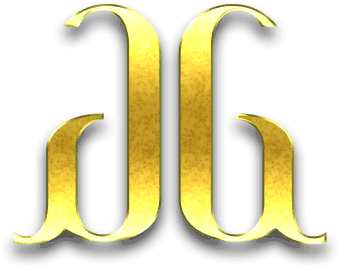Functional Rhinoplasty in Los Angeles
Septoplasty
The septum (dividing wall of cartilage between the right and left airway of the nose) can be tilted, curved, or fragmented. It is made of both cartilage and bones. These changes can be congenital (from birth and become a problem when the nose is fully grown) or a result of trauma and injury to the nose. Post-traumatic septal deviation and nasal airway obstructions are treated the same way as congenital through a septoplasty. A septoplasty involves straightening of the septum through removal of the most curved portion of the septum. If it is tilted, it can be repositioned and straightened.
A septoplasty can be performed for two purposes: 1) to correct a deviation and breathing problem; and/or 2) to obtain cartilage grafts for either a primary rhinoplasty or revision rhinoplasty. It is usually the preferred first choice location to borrow cartilage for grafts of all types. In revision surgery, the septum may already have been partially removed or injured and may not have enough cartilage to use, and the ear and ribs are the next preferred locations for donor sites.
Turbinectomy
Removal of a portion of the turbinates (see definitions); usually a sliver of the mucosal lining is performed to help open up the nasal airway. The bony part of the turbinate can also be removed but is more commonly micro-fractured to make it smaller and to be moved off to the side and out of the way of the airway (tunnel). It is important to not remove too much, which can result in ENS (empty nose syndrome). ENS can be frustrating, as patients will feel like they are not moving air through the nose even though it is wide open and unobstructed.
Dr. Ghavami’s preference is to perform a turbinoplasty. He reserves “turbinectomy” for repeat situations; and for cases where the turbinates are excessive in size despite performing a turbinoplasty.
Turbinoplasty
Changes are made to the turbinates without removing any portion of them. This usually requires a micro-fracture (“corn-flaking”) of the bony prominence (conchal elements) of the inferior (lowest position and largest) turbinate. In addition, the mucosal lining of the turbinate is shrunken and scarred down through heat, either by a cautery or special turbinate instruments (“intramural coblation or fulguration”). Turbinoplasty may preserve more of the turbinates’ natural function than turbinectomy, but turbinectomy may be beneficial in some circumstances. Dr. Ghavami will determine which is best for your specific situation. A CT scan may be required in addition to an internal nasal evaluation.
Improving your Nasal Breathing
After conservative measures such as nasal saline irrigation and/or steroid sprays have been attempted, you may require surgical treatment. Correcting poor nasal breathing is one of the most rewarding steps you will take in your overall health. Proper breathing starts with open and easy nasal air movement. When the nose is obstructed on one or both sides, numerous health problems can develop or become aggravated. Snoring, headaches, sinusitis, sleeplessness, and poor exercise tolerance can all be a result of improper nasal breathing. Correction can involve a septoplasty, internal and external valve treatment, turbinoplasty, or turbinectomy. Spreader grafts and lateral crural strut grafts may be necessary to strengthen, support, and keep the nasal cavity open while providing subtle cosmetic benefits as well. Dr. Ghavami recalls one of his most rewarding situations in which he performed a rhinoplasty, septoplasty, and turbinoplasty on a patient who was dependent on Afrin spray to breathe and was developing “rebound congestion.” After the surgeries, the patient no longer needed Afrin or any nasal sprays and became an avid yoga instructor. As many of you may know, Yoga requires proper nasal breathing for success and mastery.
FAQs
How do I know if I need a septoplasty?
You may need a septoplasty if you have persistent nasal blockage, frequently breathe through your mouth, or suffer from chronic sinus infections. A consultation and nasal exam with our surgeons, Dr. Ghavami and Dr. Vranis, will determine whether you have any degree of septal deviation and its contribution to your symptoms.
What are the signs of a deviated septum?
 Common signs include difficulty breathing through one side of your nose, frequent nosebleeds, facial pressure, and loud breathing during sleep. You might also experience frequent sinus infections or feel that your nose appears crooked. Sometimes, when looking at the nostrils from below, you will see the septal cartilage is more pronounced on one side compared to the other.
Common signs include difficulty breathing through one side of your nose, frequent nosebleeds, facial pressure, and loud breathing during sleep. You might also experience frequent sinus infections or feel that your nose appears crooked. Sometimes, when looking at the nostrils from below, you will see the septal cartilage is more pronounced on one side compared to the other.
Can septoplasty change the shape of my nose?
Septoplasty alone does not typically change the external appearance of your nose. However, if your deviated septum significantly affects the extrenal nasal contours, subtle changes to the overalll shape may occur. If desired, it can be combined with cosmetic rhinoplasty to achieve both functional and aesthetic goals.
What is the recovery time after a septoplasty?
Most patients can return to work and regular activities within 7 to 10 days. The internal splints are removed at your 1 week post-operative visit. While swelling and mild discomfort are normal during the initial recovery, full healing may take several weeks. Your breathing should steadily improve as the swelling subsides. This may sometimes take 3-4 months.
Is septoplasty painful?
Discomfort after septoplasty is generally mild and manageable with medication. Patients often describe a sensation of pressure or congestion rather than intense pain. Most report feeling significantly better within a few days post-surgery.
What is the difference between turbinoplasty and turbinectomy?
Turbinoplasty involves reducing the size of the turbinates while preserving their structure and function. Turbinectomy removes part or all of the inferior turbinates which is typically reserved for the more severe cases. Your individual surgical plan will depend on the severity and nature of your obstruction.
How do I prepare for nasal surgery like septoplasty?
With the permission of your primary care doctos, you will need to stop taking blood-thinning medications. You will also be required to avoid smoking and follow specific pre-operative instructions provided by your surgeon. A thorough exam and possibly imaging will be conducted to guide your treatment plan.
When can I return to work or normal activities after nasal surgery?
You should plan for about a week of downtime. Most patients feel well enough to resume light activities within 7 to 10 days, though strenuous exercise should be avoided for at least three to four weeks to ensure proper healing.
Can septoplasty be combined with cosmetic rhinoplasty?
Yes, functional and cosmetic rhinoplasty can be performed together in a single procedure. In fact, it most often is as patients wish to make certain cosmetic improvements while under anesthesia. This approach allows for both improved breathing and a refined nasal appearance, reducing the need for multiple surgeries and recoveries.
What are the risks and complications of septoplasty?
Though rare, risks include infection, bleeding, septal perforation, and persistent nasal obstruction. Dr. Ghavami and Dr. Vranis take extensive precautions to minimize these risks and provides comprehensive post-op instructions for a safe recovery.
Will I have nasal packing or splints after surgery?
You may have soft nasal packing or internal splints to support the healing septum and control bleeding. These are typically removed within a few days during a follow-up visit.
What follow-up care is required after septoplasty?
Follow-up visits are essential to monitor healing, remove splints if necessary, and ensure that your nasal passages are staying open. Our team will also provide care tips to keep your nose clean and promote healing.









